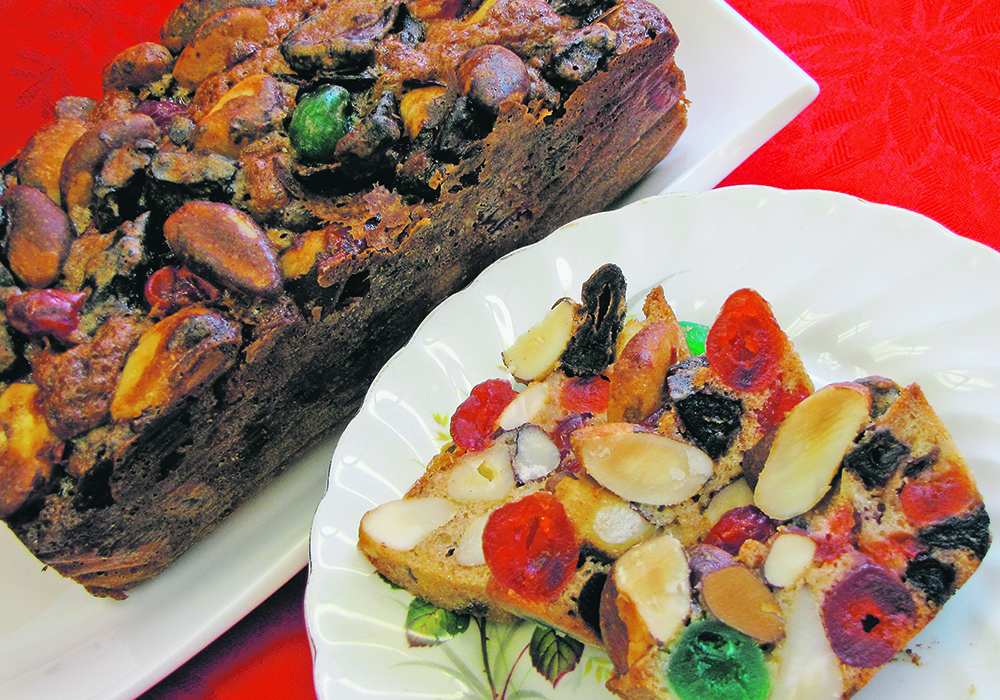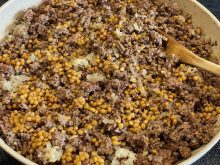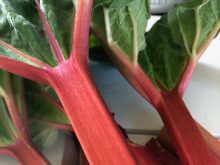For many, a fruit-filled cake is part of their Christmas tradition, to be enjoyed at the end of the meal or given as a gift.
A fruitcake is a mixture of raisins, currants, glazed or dried fruits, nuts, and just enough rich batter to hold the mixture together.
The moisture from the fruit permeates the cake to develop rich, complex flavours. For an even moister cake, the fruit pieces are soaked in liquor or fruit juice before adding to the batter.
To further develop the flavour and moist texture, fruitcakes are aged or ripened. This requires wrapping the cake in a liquor or juice-soaked cloth then sealing the cake in plastic wrap, sealable plastic bag or air-tight container. The cakes are checked weekly to resoak the cloth. Liquor-soaked cakes should not be wrapped in tinfoil because the foil will deteriorate.
Read Also

Nutritious pork packed with vitamins, essential minerals
Recipes for pork
For most recipes, at least a full month of ripening is a necessity. Longer aging is fine, even up to a year or more. Store in a cool dry place. A refrigerator is fine but cakes shouldn’t be frozen until the flavours have ripened and mellowed.
Long, slow baking is needed to completely cook the cake. To prevent over-browning and for ease of removal from the pan, line the cakepan with two layers of brown paper or parchment paper. Cool the cake in the pan and then carefully lift it out using the paper, handle gently to avoid wrecking the heavy cake.
After the cake has ripened, it is ready to serve. The top of the cake can be decorated with candied fruit and nuts and then glazed. Apricot or red currant jam can be used as a glaze, heat and brush onto the cake. Fruitcakes can also be glazed, then topped with almond paste and frosting. Decorate just a few days before serving.
When ready to serve, cut the cake into half-inch slices using a sawing motion. To avoid crumbling, use a serrated knife or other sharp knife.
Dark Fruitcake
A fruit cake loaded with brandy-soaked fruit. Bake in three loaf pans or fruitcake pans. An alternative is to bake some or all of the mixture in muffin tins for individual mini fruit cakes. Use mini muffin pans for bite-size fruitcakes.
- 2 c. sultana raisins 500 mL
- 2 c. Thompson raisins (dark) 500 mL
- 1 c. currants 250 mL
- 1 c. mixed peel 250 mL
- 1 c. glazed cherries 250 mL
- 1/2 c. deluxe dried fruit mix (papaya, cherries and pineapple) 125 mL
- 1 c. brandy 250 mL
- grated zest of 1 large orange
- grated zest of 1 large lemon
- 1/2 c. blanched almonds cut in half lengthwise
- 2 c. butter 500 mL
- 2 c. brown sugar 500 mL
- 5 eggs, room temperature
- 1/2 c. molasses 125 mL
- 2 tsp. vanilla extract 10 mL
- 1 c. flour 250 mL
- 3 c. flour 750 mL
- 2 tsp. baking powder 10 mL
- 1 tsp. baking soda 5 mL
- 1 1/2 tsp. salt 7 mL
- 1/2 c. brandy 125 mL
Combine raisins, currants, mixed peel, cherries and deluxe fruit mix in a plastic container with a lid. Pour brandy over dried fruit; stir in orange and lemon zest. Close container and set aside to macerate or soak for two to three days.
Stir or shake container every few hours as you remember. Alternatively, cover the bowl and microwave two minutes, or until very hot. Leave covered and let sit until almost all the liquid has been absorbed into the fruit, about two hours.
On baking day toast almonds in moderate oven until light brown. Set aside.
Lower oven to 275 F (140 C). Place a pan of water on the lowest oven rack, refill as necessary.
Prepare two 9 x 5 x 3.5-inch loaf pans, three 6 x 6 x 3.5-inch Christmas cake tins or three 7 x 3.5 x 3.5-inch loaf pans with non-stick cooking spray and line each pan with two layers of brown or parchment paper, leaving a two-inch overhang on each side. Spray the paper with cooking spray.
Another option is to use muffin tins lined with two muffin papers per cup.
Combine butter and brown sugar in bowl and beat with an electric mixer until well combined. Add eggs, molasses and vanilla and beat well.
Add toasted almonds and one cup of flour to the dried fruit and brandy mixture, stir to combine. Adding flour to the fruit mixture will prevent it from sinking to the bottom of the pan during baking.
Measure and sift three cups flour, baking powder, baking soda and salt. Add to butter, sugar and egg mixture, stir well to combine.
Fold almonds and soaked fruit into batter until well combined. Spoon mixture into the prepared loaf pans or muffin tins, filling three-quarters full. Tap pans on counter to pop air bubbles.
An option is to arrange pecan halves, whole or slivered almonds, candied cherries or fruit decoratively on the cake top.
Place pans on centre oven rack, without touching each other. To prevent overcooking the tops, cover fruitcakes with aluminum foil for the last half hour of baking.
Bake until the cakes begin to pull away from the sides of the pans, the tops spring back slightly when pressed and a toothpick or skewer inserted in the middle of cake comes out clean. Baking time is about three to four hours for cakes and loaves and 90 minutes for muffin-size mini-cakes. It is better to cook a little longer to ensure centres are completely cooked.
Transfer to a wire rack and brush top with brandy. Let cool in pan on rack. Use parchment overhang to carefully remove cake from pan.
Mom’s Brazil Nut Fruitcake
This is a cake I have fond memories of my mother making. Interestingly, I have found the exact same recipe in several cookbooks and on the internet. A note on Mom’s recipe indicated that it was from a neighbour, Mrs. Wagner.
- 1 lb. Brazil nuts 500 g or 3 cups
- 1 – 13 oz. pkg. pitted dates375 g
- 1 c. maraschino cherries, drained 250 mL
- 3/4 c. all-purpose flour 175 mL
- 3/4 c. white sugar 175 mL
- 1/2 tsp. baking powder 2 mL
- 1/2 tsp. salt 2 mL
- 3 large eggs
- 1 tsp. vanilla extract 5 mL
Preheat oven to 300 F (150 C). Grease and line with parchment paper one 9 x 5 x 3.5-inch loaf pan.
Sift the flour, white sugar, baking powder, and salt together. Mix in the nuts, dates, and cherries.
Beat the eggs until foamy, add the vanilla and beat to combine. Add eggs to the flour mixture. Stir until just combined then spoon into the prepared pan.
Bake at 300 F (150 C) for one hour and 45 minutes and a toothpick inserted comes out clean. Place a pan of water on the lowest rack under the cake during baking. Wrap in plastic and then foil and store in the refrigerator for several weeks before cutting.
Looking for COVID-19 coping stories
The past six months have been strange, disruptive, freeing and lonely.
How have you coped?
What have you learned or what are you now doing differently?
Please share your experiences, stories and thoughts with us.
A draw for a gift basket of Canadian-made products will be made from all the entries on Dec. 7.
A sample of reader replies will be shared in future columns.
Please send your Coping With COVID Ideas to team@producer.com or mail to:
The Western Producer,
1000-3530 Millar Ave.,
Saskatoon SK,
S7P 0B6
All entries must be received by Dec. 7.
Betty Ann Deobald is a home economist from Rosetown, Sask., and a member of Team Resources. Contact: team@producer.com.

















